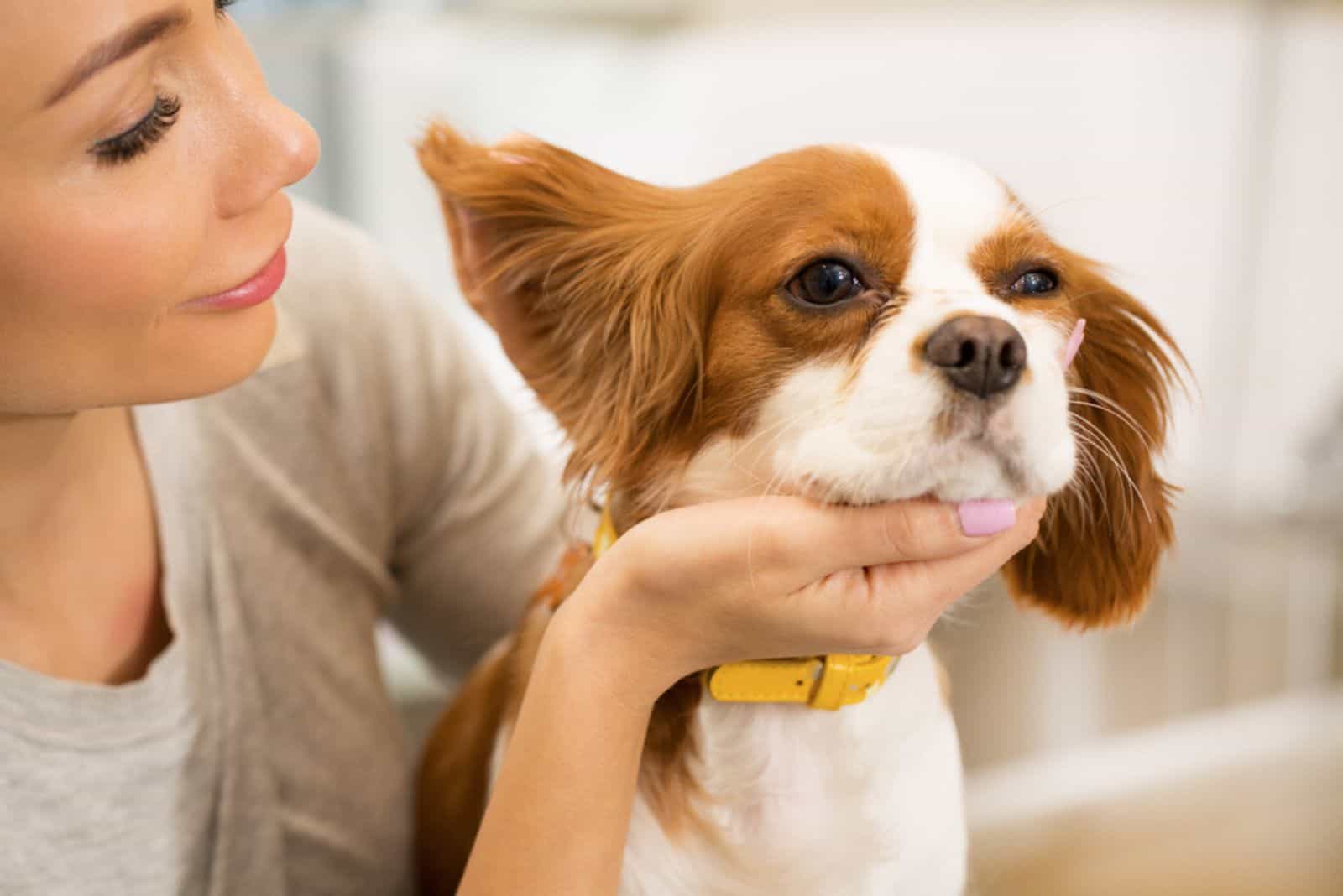You check your dog’s ears and you notice that one or both are red. That’s not a pleasant sight to see. Why are they red?
There’s a moment of absolute focus while you try to have another look and keep your dog calm so that you can double-check.
Yes, there it is. That redness…
Well, I am here to tell you that there are 11 possible reasons why your dog’s ears are red, and we’re going to cover reasons behind all kinds of red ears:
- One ear red or both
- Red just a bit
- The inner side is completely red
- Swelling or no swelling, etc.
After all, red is an indication that something is wrong no matter if it’s just a few spots or patches of red color.
1. Bacterial Infection
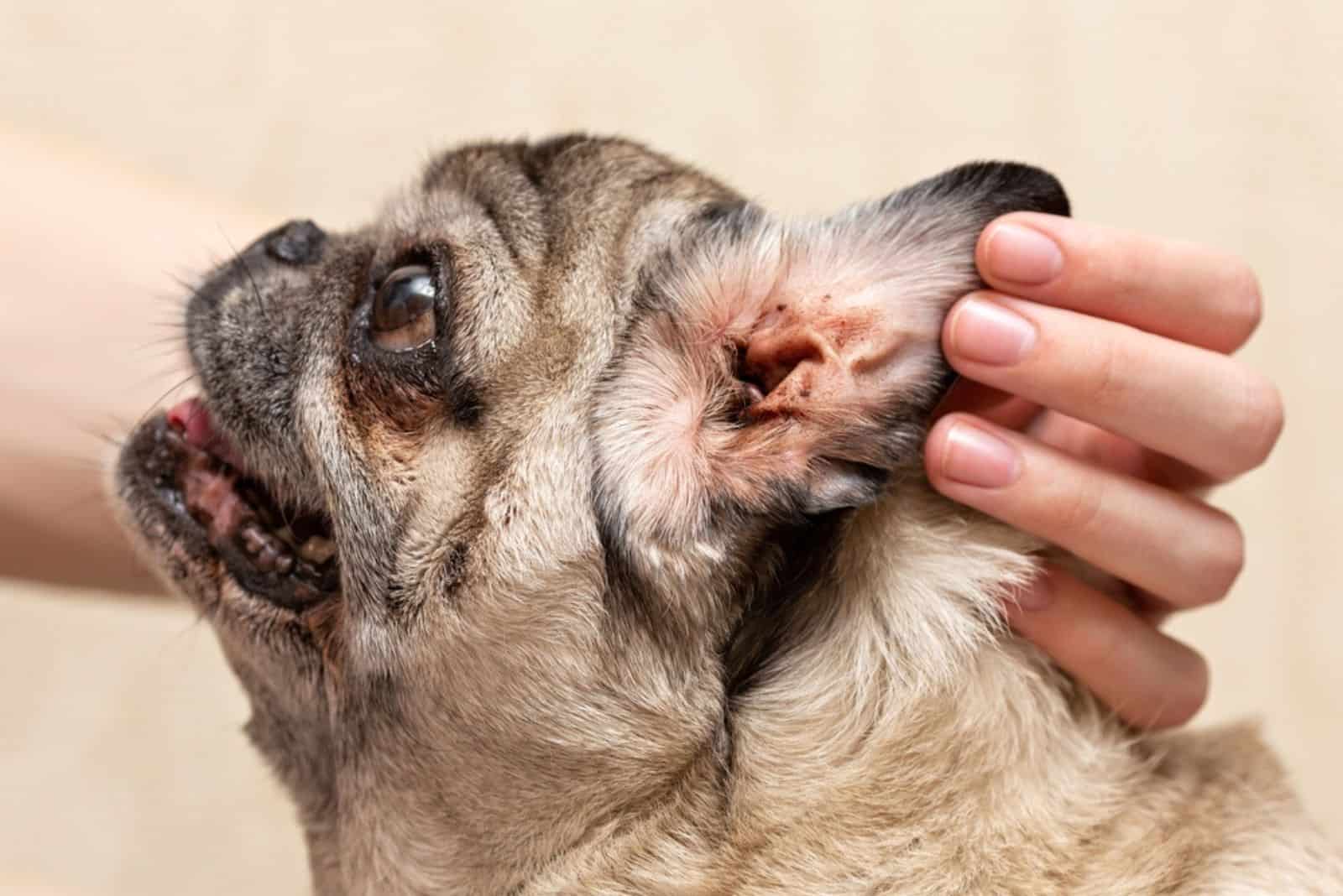
This is one of the most common reasons for dogs’ ears to turn red. The reason behind this is medically, obvious – redness is one of the five signs of inflammation present in infections:
- Dolor (pain)
- Ruber (redness)
- Calor (increased temp.)
- Tumor (swelling)
- Functio laesa (loss of function)
These changes happen because of the fight that a dog’s immune system has against bacteria. If the reason behind inflammation and consequential redness of the ear is a bacterial infection, then that health condition has a name: Canine Otitis Externa.
According to Dr. Jangi Bajwa, a veterinary dermatologist, and his research (1), Staphylococcus spp. is a bacteria that most commonly causes ear infections in dogs.
Here are some facts about this infection:
- They can affect one or both ears
- They can be acute or chronic
- Dogs with long ears are prone to it
- If left untreated, it can lead to loss of hearing
- Other symptoms include ear discharge, pain, and swelling
2. Foreign Object
Our furry friends are well-known explorers. We need to thoroughly check their entire body for foreign objects, grass, ticks, or anything that can get stuck in their fur, paws, eyes, or ears. Why is this important?
Because if left for too long, a foreign object stuck inside an ear will cause an ear infection. In other words, the ear will turn red as one of the signs of an ongoing infection.
The most dangerous for our dogs is grass seeds during summer and spring. It’s the most common type of outdoor plant, which means no dog is safe.
-picture-
Grass seeds can cause serious injuries to dogs. Check your dog’s ears thoroughly after every walk, especially if you have a Springer Spaniel, a Golden Retriever, a Brittany Spaniel, or an Airedale Terrier because according to study (2), these dog breeds have an increased prevalence of grass awn (seed) problems.
3. Fleas And Ticks
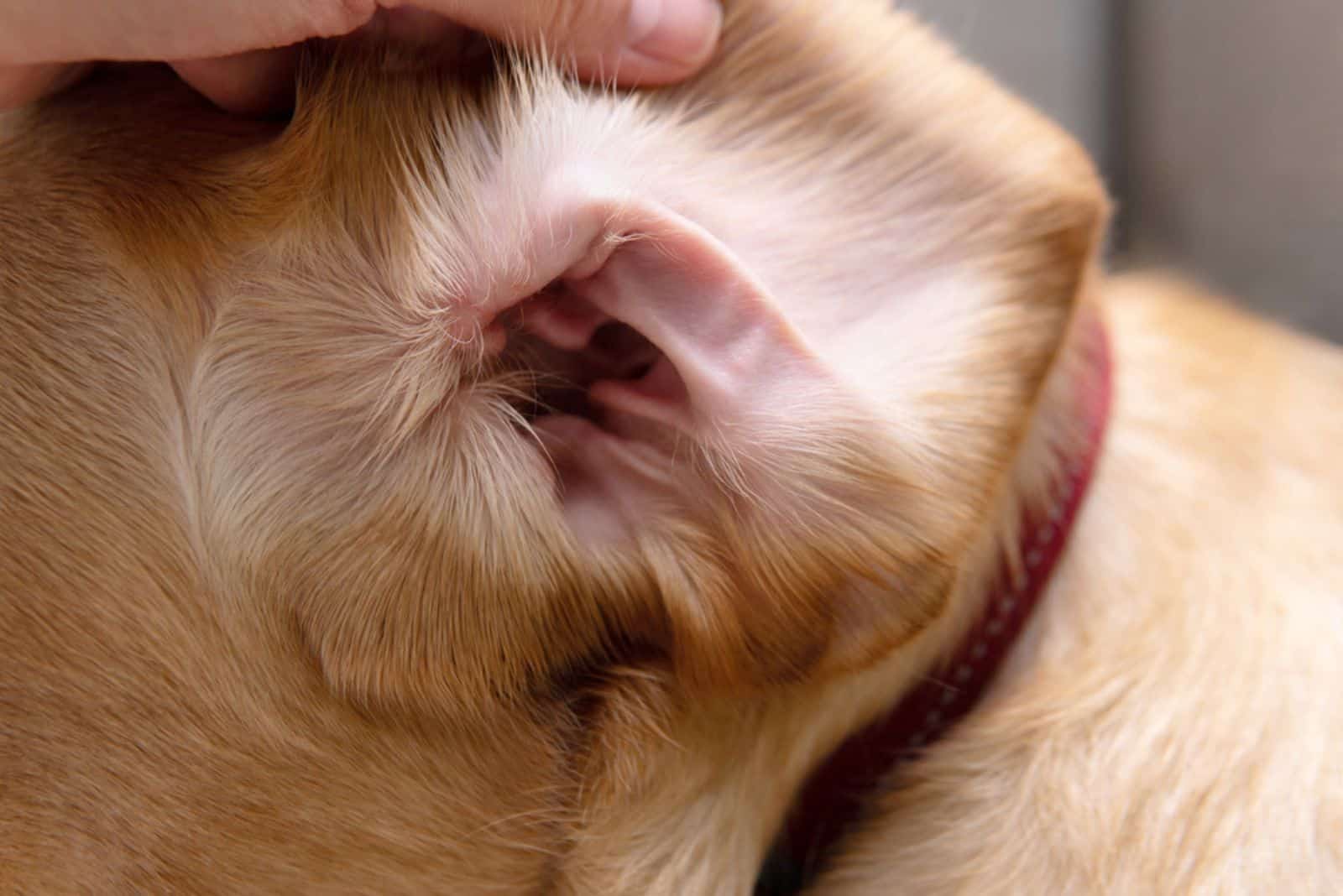
Just like they get stuck with some grass seeds, dogs can also get stuck with fleas or ticks. Fleas and ticks bite dogs to drink their blood, causing flea bite hypersensitivity (3). The fleas’ and ticks’ saliva is the main problem, and the main reason behind your dog’s red ears.
Some dogs will show other symptoms:
- Loss of hair
- Scabs
- Brittle coat
Of course, they will also be scratching their head or their entire body depending on how big the flea infestation is.
When it comes to ticks, all it takes is one tick to latch on and cause all of these problems, including the redness of the ears.
That’s why thoroughly checking our dogs after every walk is a must.
Read Next: What Do You Do If You Find A Dried Dead Tick On A Dog?
4. Mites
Another infestation that causes dogs’ ears to turn red is mite infestation. This is a tricky one because it can be really hard to get rid of mites.
You might notice your dog has red ears, and some of these symptoms as well:
- Hair loss (in patches)
- Itchiness
- Skin redness on other parts of the body
- Dry and flaky skin
- Black gunk inside the ears
Besides ears, according to a study from 2022 (4), other predilection sites include the face, groin, abdomen, tail, and paws.
The best option is to take your dog to the vet. They can tell you how to get rid of them (it’s one of these 11 solutions), but get ready for a long treatment – 6 months or more.
5. Dirty Ears
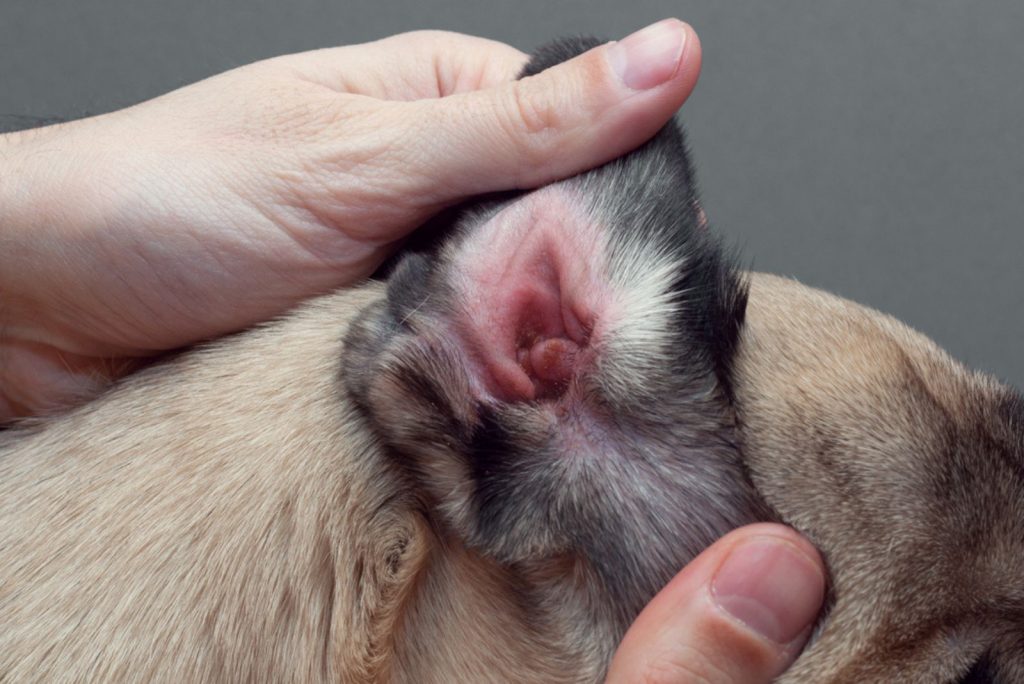
Besides parasitic infestations, that black gunk you might see in your dog’s ear can simply be wax build-up or dirt.
If you don’t clean your dog’s ears, the accumulated dirt can block the pores and ear glands, and obstruct the ear canal, causing redness in the inner part of the ear.
You have to clean your dog’s ears regularly. The frequency depends on the dog’s breed, activity, ear shape, and age.
In general, once a month is a must. However, dog breeds, such as Goldendoodles require you to clean their ears at least twice a week.
You can watch this video to learn more about cleaning your dog’s ears.
-video-
6. Injury
Just like a grass seed can easily get stuck in their ears, they can also easily get an injury from surrounding objects, other dogs, or other animals.
Even rough play between dog siblings can lead to ear scratches and injuries. However, these types of injuries are most common in Shepherd dogs and other working dogs that have to deal with other animals on a daily basis.
However, out of all injuries in working dogs, injuries to muscles and bones are the major reason for the retirement of working dogs (5).
Injury symptoms are:
- Redness
- Pain
- Swelling
- Blood
If you suspect an injury, look for bite or scratch marks inside and around your dog’s ear.
7. Allergies

According to the VCA, one of the most common allergies in dogs is food allergies (6). In layman’s terms, allergies cause a rampage in a dog’s body, leading to tissue inflammation. And, as we’ve already seen, one of the signs of inflammation is redness. In this case… ear redness.
However, a dog doesn’t have to be allergic to food. It can be allergic to dust, pollen, fabrics, etc.
Other symptoms pointing to allergic reactions are:
- Sneezing
- Coughing
- Itchiness of the skin
- Rubbing head on the carpet
- Eye discharge
- Ear discharge
If you notice these signs, it means it’s time to take your dog to the vet.
Read Next: 7 Home Remedies For A Sneezing Dog
8. Aural Hematoma
Ear hematoma (or aural hematoma) refers to the blood accumulation inside the ear cartilage and skin. This is all happening on the inside of the ear flap (pinna).
The blood gives a red color to the ear. However, the redness can be of various shades depending on the blood amount and localization.
A study (7) has been done showing that Bull Terriers are the most susceptible to aural hematomas. Golden Retrievers are in fourth place, and right after them are Saint Bernards.
According to this study, Whippets and Toy Poodles are one of the least susceptible dog breeds.
9. Aural Neoplasia And Polyps
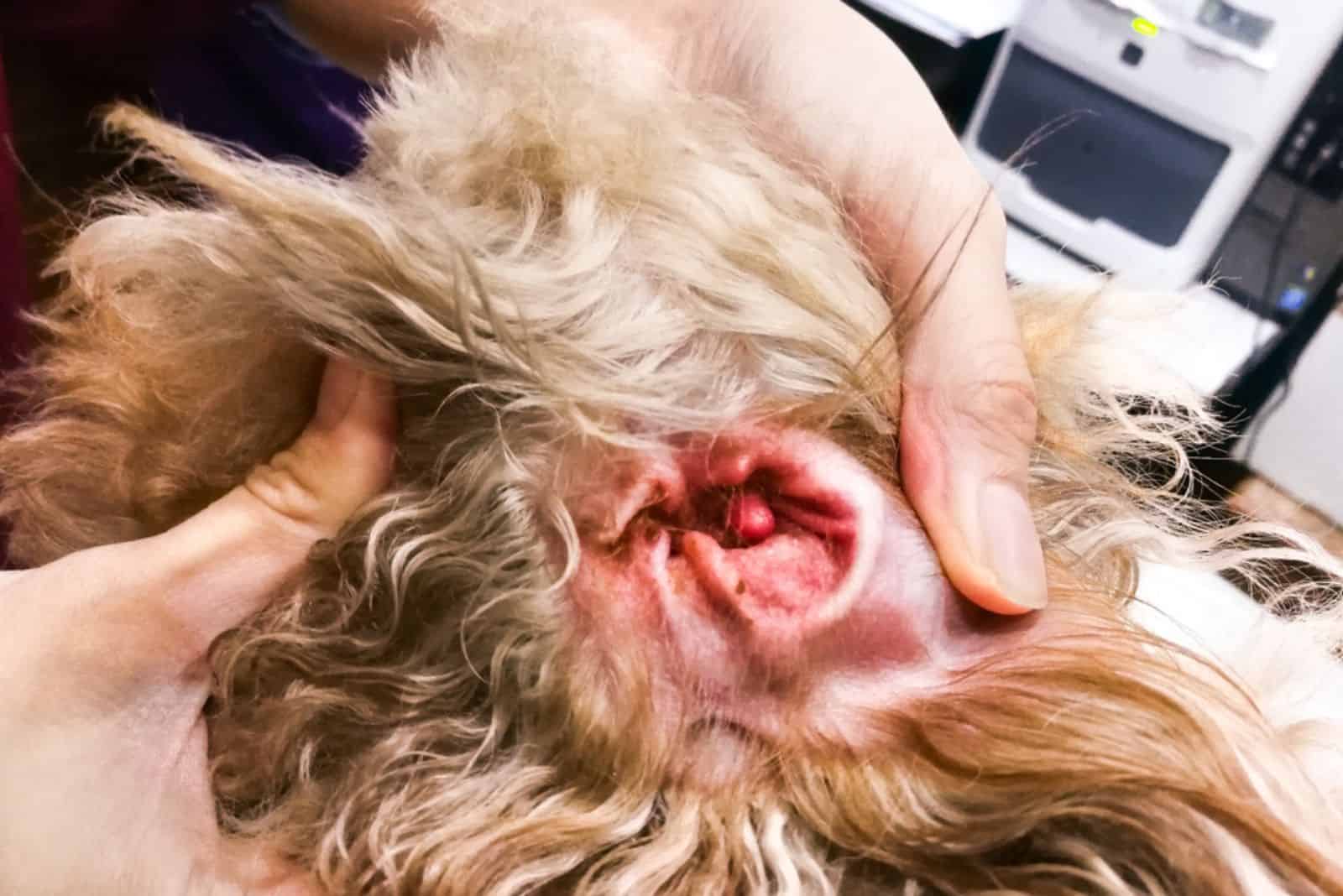
Any abnormal proliferation of the cells (tissue growth) that cannot be regulated by the body is either called neoplasia or tumor. Because it’s on the ear, its name is aural neoplasia.
These growths can either be benign or malignant.
Both can cause redness of a dog’s ear. Depending on the localization and the severity (or how big the tumor is), the redness can be more or less noticeable.
The size and the type also dictate the treatment and overall prognosis, as well as early diagnosis followed by adequate therapy. (8)
On the other hand, if a mass is connected to the base tissue through a pedicle, it is a polyp.
The majority of polyps are non-malignant, and they can easily be removed through surgical intervention.
10. Ear-Cleaning Solutions Reaction
When we clean our dog’s ears, we can use two things:
- Lukewarm water
- Ear cleaning solution
The second one can cause some problems for a dog, especially if it’s not vet approved. These ear-cleaning solutions have alcohol or hydrogen peroxide (H₂O₂) that can cause irritation inside the dog’s ear canal.
This is especially the case if the ear has ulcers, open wounds, or if it has a lot of wax. (9)
To avoid these problems, lukewarm water is all you need to clean your dog’s ear.
If you’re in doubt, it’s always better to call your vet and ask about the ear-cleaning solution you have.
11. Contact Dermatitis
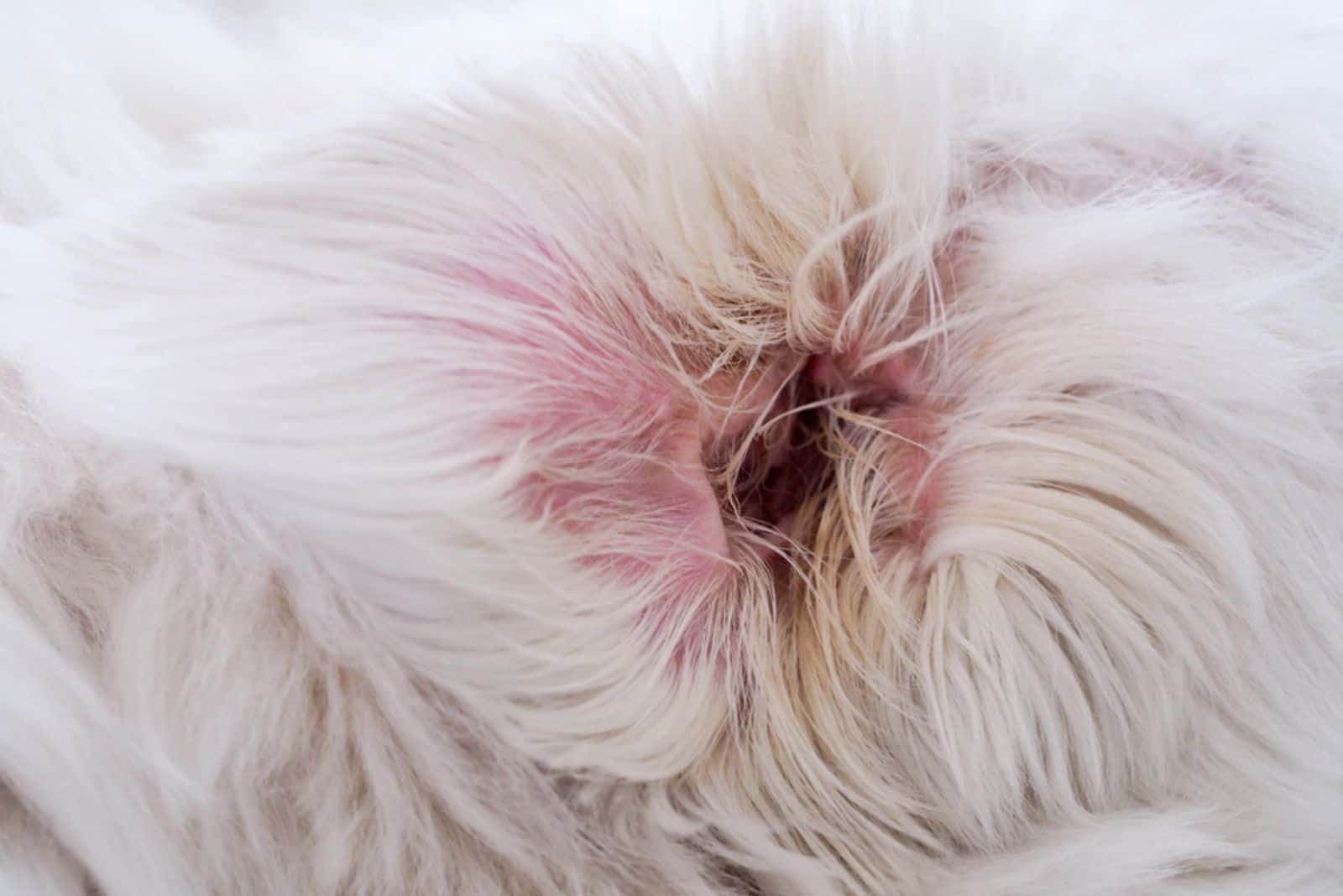
This refers to contact hypersensitivity disorder (10), induced by chemicals applied to the dog’s inner side of the ear.
These chemicals can be:
- Ointments
- Medications
- Shampoos
- Soaps
As soon as the cause of the dermatitis is gone, the ear will go back to normal. However, in rare and severe cases, professional help is needed to calm the reaction. This usually happens when large amounts of chemicals come into contact with the ear.
Besides the mentioned chemicals we use to help or clean our dogs, home-cleaning solutions can also cause contact dermatitis in dogs.
Final Thought
As you can see, dogs’ ears can become red for various reasons. The most common reason is an infection – a bacterial one.
However, reasons can be much more serious such as tumors, polyps, or injuries. The thing you have to do, whatever the reason, is to take your dog to the vet.
If the vet tells you that it’s just a dirty ear, great! You can go home and clean your dog’s ears. But, what if it’s something much more serious?
Why take chances when you can play the safe card right from the start. After all, it’s our dogs’ health we’re talking about, and when it comes to that – it is better to be safe than sorry.
